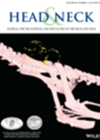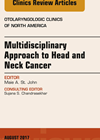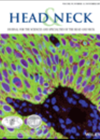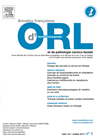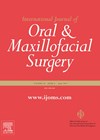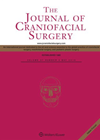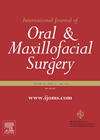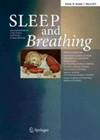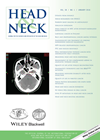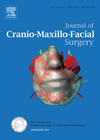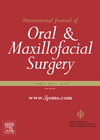
Journal Reviews
The newest robot from da Vinci – what can it offer for hypopharyngeal cancer surgery?
The standard existing da Vinci surgical robot (the Si model) has been much maligned for not being optimally designed for transoral access and endoscopic manoeuvrability in head and neck surgery. This preclinical work from Holsinger and his team looks at...
Advances in surgical innovation for head and neck cancer
This article reviews current advances in surgical treatment of head and neck cancers such as sentinel node biopsy, stereolithic modelling, transoral robotic surgery and intra-operative imaging of tumour margins. Sentinel node biopsy has been found to be especially useful for...
What is the evidence for contralateral tonsillectomy in TORS for known unilateral tonsil malignancy?
The concept of field changes by carcinogens within the upper aerodigestive tract is well established with reported rates of synchronous tumours of 4% and second primaries of 36%. The tonsil in particular has the highest rate of synchronous tumours, postulated...
The role of imaging in differentiating rare temporal bone neoplasms
This paper provides a useful tool to assist in determining the diagnosis of benign neoplasms of the temporal bone using readily available imaging modalities. Specifically, this group have looked at chondrosarcoma, an expansile hypermetabolic mass lesion usually found in the...
Epistaxis and anticoagulants
The French Society of Otorhinolaryngology Head and Neck surgery issued some recommendations on the management of epistaxis in patients receiving anticoagulants, anti-platelet aggregants and anti-vitamin K drugs. This was a national multidisciplinary evidence-based concensus document. The group recommends review of...
First signs of late nodal metastases
This is a retrospective review of 65 patients who had late metastases during follow-up after initial curative treatment. They analyse the detection methods of palpation, ultrasound, CT and subjective symptoms. Palpation detected the nodes in 31 patients, ultrasound in 17,...
Improving the temporal contour in reconstruction
A feature of the temporalis flap is the sunken contour left behind. This group from Japan present a variation for filling defects for which we would traditionally use a temporalis muscle containing. The laterally based peri-cranial flap they present uses...
Safe distances in the infratemporal fossa
This analysis from China involved 50 enhanced CT datasets to reconstruct the skull, internal carotid artery and the internal jugular vein. The anatomical routes of these vessels were related to the styloid process, height of the pterygoid plates, distance from...
Outcome of TORS to tongue base and epiglottis in patients with OSA intolerant of conventional treatment
The use of transoral robotic surgery (TORS) in ENT is rather controversial, but the use of robotic surgery for obstructive sleep apneoa (OSA), makes it doubly so. Previous studies on TORS in OSA have been performed with other types of...
Risk factors for TORS treatment failure in HPV-related oropharyngeal cancers
HPV-related squamous cell cancers are an increasingly common cause of malignancy in the oropharynx. There is evidence that these cancers are associated with a significantly improved overall survival compared to conventional HPV-negative tumours. The optimal treatment for such cancers is...
Sialendoscopy assisted excision of parotid stones
This is a retrospective paper from China that looks to assess the efficacy and safety of sialendoscopy with a combined transoral or transcutaneous approach for the removal of parotid stones. Sialolithiasis is known to be a cause for obstructive parotid...
Intermediate risk factors SCC tongue
This retrospective review from Japan assessed 89 patients who underwent surgery for squamous cell carcinoma of the tongue, specifically they reviewed the evidence of perineural and vascular invasion (27.0% and 23.6%). Their results suggest, not unsurprisingly, that perineural and vascular...

